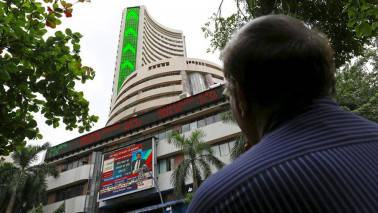Being an interim Budget, any major policy revision or direct benefit for the automotive industry seems unlikely
The upcoming Budget is likely to reflect the government’s continued focus on rural economy, job creation and infrastructure investments, which would be supportive to the automobile sector for the longer term.
Specifically, for the rural economy, any steps to increase institutional farm credit supporting financing availability to the farm sector, income support mechanism to small and marginal farmers and/or enhanced allocations for farmer welfare programmes/schemes would be significant positive.
Also, while the government has focused on increasing crop MSP, steps to improve procurement mechanism to ensure reasonable crop realisations would be significantly positive.
Being an interim budget, any major policy revision or direct benefit for automotive industry seems unlikely. However, clarity on import duty structure on CKD units of electric vehicle and incentive outlay for FAME II scheme would be a welcome step.
The automobile industry, after registering robust growth across sub-segments, in last few quarters, have faced headwinds over the last few months, as reflected in weak wholesale despatch numbers reported in November & December.
A significant 30%+ volume in the passenger vehicle (PV) segment and a bulk of entry level motorcycle demand is currently contributed by the rural sector. This apart infrastructure spend remains key to support long term fundamentals of the economy - which would support job creation and consumer sentiments - and in turn support demand for commercial vehicles (CV).
The PV wholesale dispatches declined by 0.4% and 0.8% YoY, during Dec-2018 and Q3 FY2019 respectively. Discount continued to remain at high level, and discount driven sales push has supported dealerships to rationalize their inventory level.
Current inventory level stands at around 35-40 days as compared to 50+ days around Sep-2018. Lower fuel prices in recent months, helped in improving consumer sentiments to some extent, though sustenance of strong footfall remains a key monitorable. The NBFC liquidity crunch however so far had only limited impact in the PV segment, with financing in the sector being largely driven by banks.
The adverse impact of tightening financing environment, viability pressure for small fleet operators (SFOs) because of higher fuel cost and weak freight rates and regulatory changes (w.r.t to axle load norms), started showing its impact on CV sales. The M&HCV (Truck) sales contracted by 11% on YoY basis during November 2018 and further by 23% largely led by HCV Truck segment (down 32% on YoY basis).
The contraction in HCV (Truck) sales can be attributed to surplus capacity owing to revision in axle load norms, which has shifted the demand in favor of 25T and 31T segments. ICRA expects CV sales to remain weak in the near-term owing to tighter credit norms being implemented by financing institutions and lower overall demand.
The industry is also witnessing higher than usual inventory levels, which may take few months to correct. However, what stood out in sales figures over the past few months was that the demand for Tipper trucks continued to be resilient to the ongoing slowdown as the segment registered growth of 15-16%.
The LCV (Truck) segment also continued to grow (7.4%) albeit at a much slower pace than earlier. The outlook for FY2020 however remains supported by infrastructure spend and expected pre-buying before the roll out of BS VI norms in April 2020, which would lead to a substantial vehicle price increase.
The domestic two-wheeler volumes de-grew by 2.2% in December 2018 (YoY basis). Post a muted festive season the channel inventory remained at relatively higher levels which resulted in dealer offtakes remaining lower during December 2018. High interest rates and increased on-road prices due to high insurance premiums had dampened the consumers sentiments for past few months.
ICRA expects the two-wheeler industry volumes to grow at 6-9% during FY2019 supported by moderate domestic demand notwithstanding healthy exports. The rural demand is expected to moderate on unevenly distributed monsoon and weaker crop realisations even as vehicle ownership cost increased. Moreover, the channel inventory at the end of December 2018 remained higher than normal, which should correct over the next couple of months.














